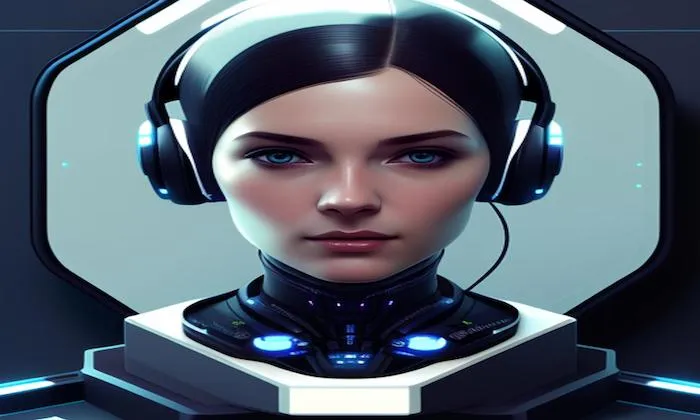It's early morning and Alex is preparing breakfast in the kitchen. "Good morning, Alex. Today is Tuesday, March 7th. It's currently cloudy and 41 degrees Fahrenheit in Chicago", chimes a gentle voice from the smart speaker on the counter. Without missing a beat while whisking eggs, Alex responds, "Good morning! Please set a timer for 3 minutes for the eggs." "Timer started for 3 minutes", acknowledges the speaker.
After enjoying the perfectly cooked eggs, Alex gets ready to head out for work. "Activate the robot vacuum cleaner in the living room for a quick clean up," Alex instructs the smart assistant while sliding on shoes and coats by the front door. "Vacuum started in the living room," it replies.
Have you noticed? Alex just used his voice to start the vacuum and set up a timer for cooking eggs. Have you experienced similar things, maybe with your car, Alexa, or your mobile device?
Many of us have used our voices to command devices but we barely know how these devices are working or how they understand our voices. So, let’s take a deep dive into their working process and the speech data for such devices.
What is Internet of Things (IoT)?
The Internet of Things (IoT) refers to the network of physical objects or "things" that are embedded with sensors, software, and other technologies to collect and exchange data with other devices and systems over the internet. These objects can be everyday items like household appliances, industrial machines, vehicles, wearable devices, and much more.
Let’s understand this with a simple example;
Imagine you have a special device at home that tells you when your plants need water. This device has a sensor that can check the moisture in the soil. It's also connected to the internet.
So, here's how it works:
1. Your plant's soil gets dry because it needs water.
2.The sensor in the device measures the dryness and sends this information to the internet.
3. You can check an app on your phone to see if your plant needs water or not, no matter where you are. The app gets the information from the internet.
This is an example of the Internet of Things (IoT). It's about things or devices that can talk to each other over the internet to make your life easier. In this case, it helps you take care of your plants without being near them all the time.
What is a Voice Assistant, and How Does It work?
A voice assistant is a type of technology that can understand and respond to spoken language, wake words, or voice commands. It uses natural language processing (NLP) and artificial intelligence (AI) to interact with users in a conversational way.
Popular voice assistants like Amazon's Alexa, Apple's Siri, Google Assistant, and Microsoft's Cortana have become common in smart speakers, smartphones, and other devices, providing users with hands-free access to information and control of various tasks.
All these voice assistant models are working by combining many core technologies like speech recognition, NLP, conversational AI, knowledge graphs, and text-to-speech. Let’s understand the working process.
Speech Recognition
Let’s imagine you are interacting with Alexa and say, “Hey Alexa, please play a Bollywood song.” First of all, Alexa has to recognize your voice and for that, we use speech recognition. This enables the assistant to accurately transcribe a user's speech into text commands. It uses machine learning algorithms like deep neural networks to continuously improve speech recognition.
Natural Language Processing (NLP)
Once the voice assistant transcribes your speech, then we use NLP. NLP helps the assistant make sense of the words, the structure of your sentence, and the context in which they are used. It considers things like grammar, semantics, and intent.
Intent Recognition
After understanding your command or query, the voice assistant identifies your intent. In our case, the voice assistant identifies the intent, which is to play music, and it further understands the specific request for a Bollywood song.
Query Processing
Then the voice assistant processes your intent and constructs a query to retrieve the relevant information or perform the required action. In our example, It processes the intent by querying a music service or your device's music library to find a suitable Bollywood song.
Action Execution
Once the voice assistant has the information or the action to perform, it plays the requested Bollywood song from your preferred music source, whether it's a streaming service like Spotify, a local music library, or another source.
Response Generation
Finally, the voice assistant generates a spoken or textual response and presents it to you. It may respond with spoken feedback like "Playing a Bollywood song for you now," and you'll hear the music playing.
As you can understand now, a voice assistant can be very helpful in many tasks. Now let’s understand how IoT and voice assistants can help us improve our day to day work.
Internet of Voice
Internet of things + Voice Assistant = Internet of Voice
Let’s discuss how we can utilize IoT and voice assistants together to build smart devices that can be controlled by our voice.
With IoT, we can measure what is happening with our devices and in our surroundings. With voice assistants, we can give commands to our devices to change their status. In more technical terms, IoT enables us to gather data and monitor the status of devices and the environment, while voice assistants allow us to interact with and control those devices using natural language commands.
Together, they provide a seamless and intuitive way to both observe and manage our surroundings, making technology more accessible and responsive to our needs.
Imagine you have a smart home with various IoT devices and a voice assistant, like Amazon Alexa or Google Assistant. You can say, "Hey Google, it's getting too warm in here," and the voice assistant, integrated with your IoT thermostat, will adjust the temperature to make it cooler.
Or you can say, "Alexa, turn on the lights in the living room," and your voice assistant will control your IoT-connected lights accordingly.
You can even ask, "Hey Google, is the front door locked?" and your voice assistant can check the status of your IoT-enabled smart lock, and if it's unlocked, you can command it to lock the door with a simple voice instruction.
This demonstrates how IoT and voice assistants work together to create a convenient way to interact with devices. But as you can see while integrating voice assistants with IoT devices, everything starts with voice and for building voice assistants, we need voice data or speech data.
So, let’s understand speech data for voice assistants on IoT devices.
Speech Data for developing a Voice Assistant
Developing a voice assistant, or any speech recognition system, requires a substantial amount of speech data. This data is used to train machine learning models that understand and respond to spoken language. In the case of voice assistants, we mainly consider wake words and voice commands.
Let’s briefly understand wake words and voice commands. Wake words and voice commands are pivotal elements in voice assistant interactions.
The wake word, like "Alexa" or "Hey Siri," acts as the trigger that activates the voice assistant, making it ready to listen. Once triggered, users can issue voice commands, such as "What's the weather today?" or "Play some music," to control devices, obtain information, or perform various tasks. This division between the wake word and voice commands ensures privacy by allowing the voice assistant to listen and respond only when explicitly called upon, enhancing user control and security in voice-activated systems.
Obtaining diverse and substantial wake-word and voice command data is a bit challenging and needs a better understanding of the overall use case. Let’s prepare this type of dataset and discuss the challenges.
Preparing Wake Words and Voice Commands for Home Automation
Challenges | Consideration |
|---|---|
Define the case | Home Automation |
Choose Device Specific Wake Word | Yugo |
Leverage a Suitable Prefix | Hey, Yugo |
Product | Fan |
Define activity | Fan On, Fan Off, Fan speed slow, Fan speech increase, Increase speech by One, decrease speech by Two, etc |
Definining Voice Commands with Wake word | Hey Yugo, Fan On |
Define Speech speed | People can speak normally, slowly, and quickly. So, we have to prepare the data with speed variation. |
Final Wake word and voice command with speed instruction | A total of six different commands with three variations means 18 sentences. |
Target people | French Speaking people |
French dialects | French from France and Quebec French, etc |
Possible Age group who can operate Fan | All age groups, including children above 10 years. So we have to collect data from age groups like kids and then 18-30, 30-40, 40-50 and 50+ depending on the market research. |
Gender Ratio | Equal ratio across different groups |
Consider audio technical requirements | Format, Sample rate, bit rate, device, etc |
Diverse community for speech collection | Data partner or internally |
These are just a few things that we have to consider while preparing data for voice assistants. We have the expertise to design and collect diverse wake words and voice commands data for any use case. For more information, you can visit our datastore. With us you can save 40% of your team and cost to build custom voice assistants.
Conclusion
The integration of voice assistants with IoT technology is revolutionizing the way we interact with our devices and surroundings, living in a new era of convenience, efficiency, and possibilities. By utilizing wake words, we activate interactions, making our devices more attentive and responsive when we want them to be. This combination of IoT and voice assistants finds applications in smart homes, healthcare, automotive, industries, retail, and education, offering us a more intuitive and connected world.
However, challenges persist, particularly in the collection and management of speech data. Developing accurate and responsive voice assistants requires extensive and diverse datasets. The ethical and privacy considerations surrounding data collection and use remain critical.





-data-collection/thumbnails/card-thumbnail/top-resources-to-gather-speech-data-for-speech-recognition-model-building.webp)
